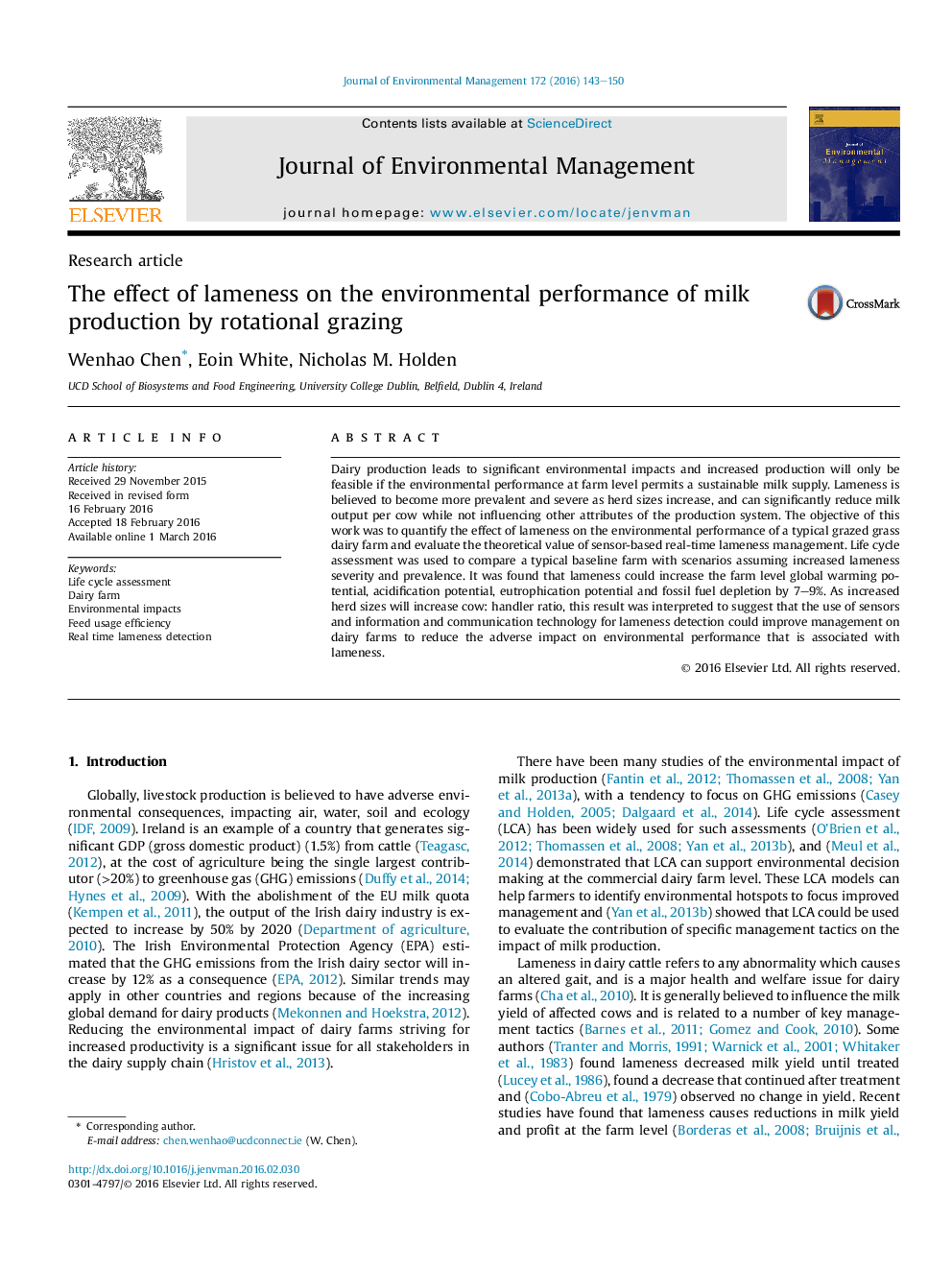| Article ID | Journal | Published Year | Pages | File Type |
|---|---|---|---|---|
| 7480640 | Journal of Environmental Management | 2016 | 8 Pages |
Abstract
Dairy production leads to significant environmental impacts and increased production will only be feasible if the environmental performance at farm level permits a sustainable milk supply. Lameness is believed to become more prevalent and severe as herd sizes increase, and can significantly reduce milk output per cow while not influencing other attributes of the production system. The objective of this work was to quantify the effect of lameness on the environmental performance of a typical grazed grass dairy farm and evaluate the theoretical value of sensor-based real-time lameness management. Life cycle assessment was used to compare a typical baseline farm with scenarios assuming increased lameness severity and prevalence. It was found that lameness could increase the farm level global warming potential, acidification potential, eutrophication potential and fossil fuel depletion by 7-9%. As increased herd sizes will increase cow: handler ratio, this result was interpreted to suggest that the use of sensors and information and communication technology for lameness detection could improve management on dairy farms to reduce the adverse impact on environmental performance that is associated with lameness.
Related Topics
Physical Sciences and Engineering
Energy
Renewable Energy, Sustainability and the Environment
Authors
Wenhao Chen, Eoin White, Nicholas M. Holden,
